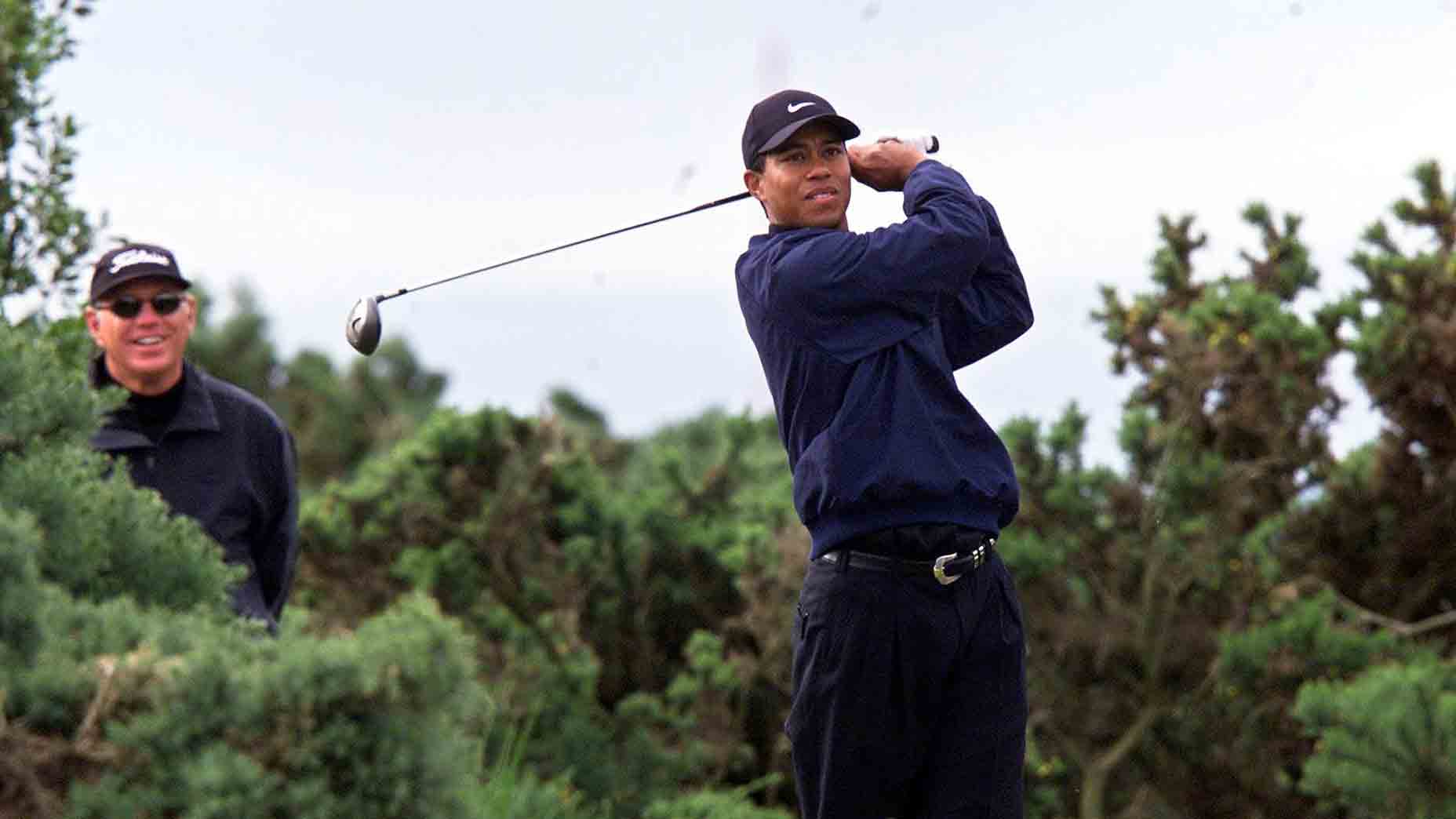Bryson DeChambeau is less than one week away from potentially winning the FedEx Cup, and apparently that’s got his scientific juices flowing.
Earlier in the week he was spotted on the range using two different launch monitors simultaneously while also employing the use of a spray bottle to simulate the effects of dew on ball speed. Naturally. Now, he’s giving Tiger Woods a putting lesson. The FedEx Cup leader shared a picture on his Instagram Wednesday afternoon, along with the caption: “Tiger and I were discussing neck movement and how it sets up your perceived equilibrium when putting. More in Stories for those interested.”
https://www.instagram.com/p/Bn67wfLhUyo/
Our GOLF.com Instagram account snagged the video for your viewing pleasure:
https://www.instagram.com/p/Bn7AlcrFuxq/?utm_source=ig_embed
Most of the time DeChambeau’s operating on a higher plane than the rest of us, so it’s easy to get immediately lost when he starts throwing around technical terms. But what he’s actually saying isn’t as complicated as it seems.
“Equilibrium” is, basically, just a scientific word for “balance.” More specifically, it’s the moderating force in your balance, so if your equilibrium is off, your balance is going to be, too.
Your equilibrium — and thus your sense of balance — is controlled by the vestibular system in your ears and head (which you can see DeChambeau referring to in the picture above), which means that it can be effected by all kinds of things. It’s why, for example, you can spin around a bunch of times and feel dizzy even though nothing around you or your physical makeup has actually changed. It’s just you doing something to trick your vestibular system, which then responds by telling your body it’s unbalanced.

What does all of this have to do with golf? Lots, actually, because balance is super important in golf, especially on the greens.
Top 100 instructor Dave Pelz talks all the time about the importance of setting up in a balanced, upright position, and that seems to be what DeChambeau is talking to Woods about here: Zeroing-out your vestibular system so it matches the stimuli you’re receiving around you, because if it doesn’t, it’s easy for your stroke to start going sideways — literally.
There are lots of exercises to help with this. A common one involves simply dropping your chin down into your shoulder (like Woods is doing in the photo), and then extending it up toward the sky. Do that a few times and you, too, could one day be casually chatting to people about perceived equilibrium.






